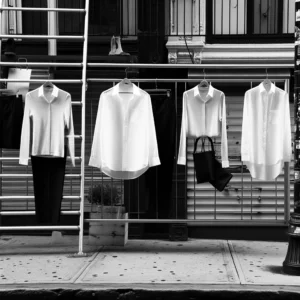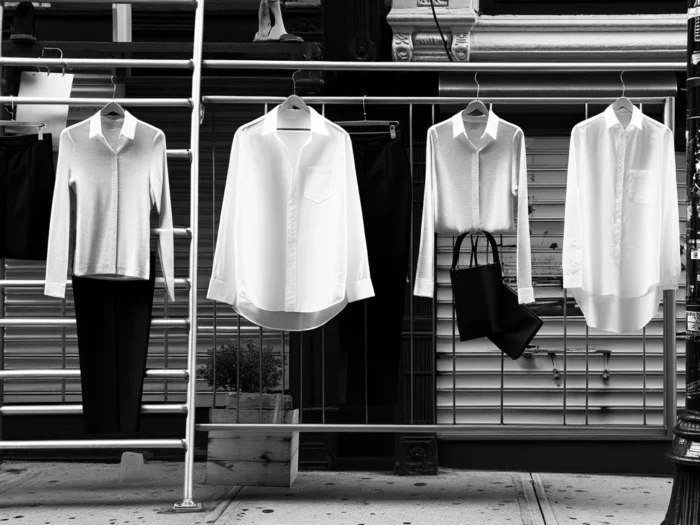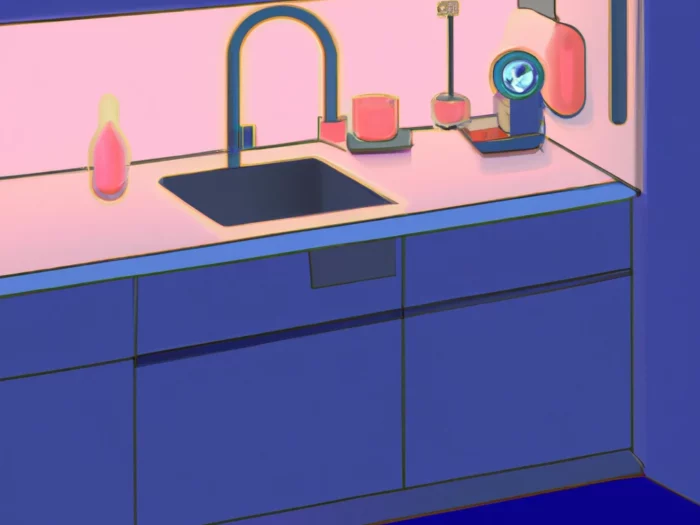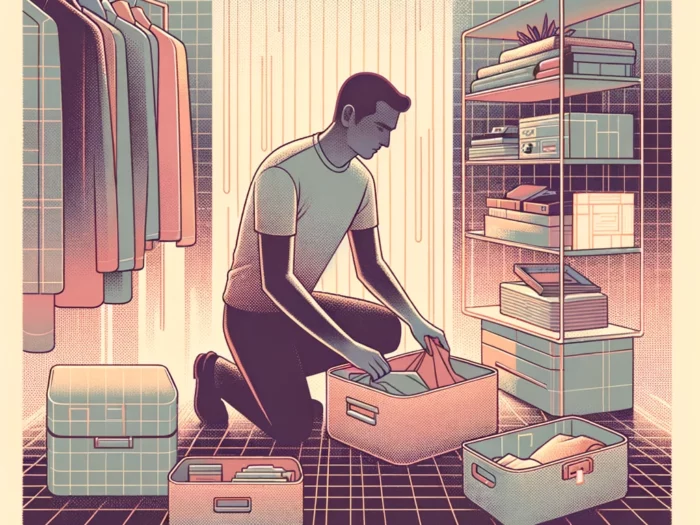Okay, so you have more stuff than space. Built-ins and shelves are great ideas. Consider buying some shelving and installing it in the higher areas of your walls. This gives you more space for storing things like books, DVDs, pictures, and other knick-knacks without taking up the lower spaces you’ll need for your furnishings.
Other places to consider built-in space-savers include storage bins under window seats and closet space under stairways. If you’re creative you’ll discover many little spaces that can be remodeled and used to create more storage. Have fun and live small.
Note: I have six blogs and cannot keep up with all of them on a regular basis. My main blog danerickson.net consumes the majority of my blogging time. I’ve recently written a book A Train Called Forgiveness, and I’m involved heavily in social media and online promotion. This limits my time to work on Hip Diggs.
I’m still looking for writers, bloggers, minimalists interested in helping to build this site. If you have an interest in being a contributor at Hip Diggs, please leave a message as a comment below:
So you’ve minimized the amount of material possessions that you have. If you’re a trooper, you’ve cut things down by 30 to 50 percent. You’re prepared to find a new space, a smaller space. But your still nervous.
If you’re living in more than 1000 square feet and you’d like to learn to live in a smaller home, you have a couple of choices. Just do it. Sell your big house and move. Or you could try a trial run. You can live in your current house, but stay within a smaller portion of the house. Shrink your living space as a trial run. This will help you to learn how to cope with less space. Be careful if you choose this trial route. It’s easy to start refilling the empty places you’ve created. It’s what our society has taught us to do. After you’ve lived in the smaller portion of your house for a few months you’ll be ready to downsize.
Sometimes we attach too much value to stuff. We hold onto some things because we spent our money and we think: to let it go would be a waste. We hold onto other things because the items hold sentimental value. And still, other things, we swear we’ll use again, someday.
Part of minimizing the amount of material goods you hold onto is realizing that they have little value in and of themselves. Possessions only have value because we attach value to them. It doesn’t matter if we bought the knick-knack for $50. If it’s been sitting in the cupboard for years, let it go. Someone else could likely find better use for it.
Sentimental possessions are a little harder to let go. Holding onto a few treasured items isn’t bad, but when we pack boxes of things away for sentimental reasons, we are simply holding ourselves back. When we hold onto the past, we live in the past. Letting go of sentimental items frees us up to move into the future. Detachment also provides an excellent space for spiritual growth.
Sometimes we’re worried that as soon as we let something go, we’ll need it again. If you haven’t used the item for over a year, it’s highly unlikely you’ll ever use it again. If you do need it again, often you can improvise or borrow. You can live without many of the gadgets you think you need. Try it. You’ll discover that it’s true.
When we detach our perceived value to our stuff, we can begin to let go and learn to live in smaller spaces. When we live in smaller spaces, we become better stewards of the earth. Here are a couple of websites on minimalism:
http://www.everydayminimalist.com
So we’re talking about minimizing. We’ll discuss organizing later. Some people have a hard time letting go of the little things. ”Oh no! Not that old newspaper from 2004. It has a story about my great aunt’s, third cousin’s best friend. I can’t throw that out.” Does that sound familiar?
Being attached to material possessions is the norm in our society. We are needy people. We like to collect things. Most of us have much more than we truly need. Although letting go of material possessions might seem painful at first, it’s actually a very freeing experience. If you’re downsizing and you have too much stuff, including boxes and shelves and closets full of little things, here are some ideas:
1. Start slow: Choose one closet, cupboard, or drawer. Go through all the contents slowly. Consider whether or not you really need each item. But don’t dwell on any one item for too long. If you do, you usually wind up getting emotionally attached and holding onto that item.
2. Use the one year rule: Other than seasonal items and a few nostalgic keepsakes, if you haven’t used something in a year, you probably never will. When you’re going through your closet and you find clothes and accessories that you haven’t worn since 2006, let them go. Someone else might be able to use them.
3. Give, trade, sell, recycle: Giving things away is rewarding. Whether you give things to friends or charity you know you have helped someone else. Books, CDs, and DVDs can be traded. You can let go of several old titles and get one new, interesting title in return. Some of your larger unused items can be sold. As for the loads of plastic and paper: recycle.
Next: a little more about letting go.
So you want to join the small house movement? You’ve decided that you’re going to do your part to help care for our planet by living small? It all starts with downsizing. Say you’re moving from a 2000 square-foot home to an 800 square-foot home. Something has to give. If you’re like most Americans, you’ve acquired enough stuff and junk to fill your 2000 square feet and then some. You’re going to have to let go of some of your long-held, but often worthless, (or at least useless to you), treasures.
Let’s start with the big stuff. Large home furnishings are space killers. The king-sized bed, the extra-stuffed recliner, the dining room table for eight? They all have to go. There are a few methods for getting rid of the big stuff.
First: You could advertise your large items in the local classifieds or Craigslist: http://www.craigslist.org.
Second: You could have a yard sale or a garage sale.
Third: If you’re large items are old and worth little, you can give them away to needy friends or to Goodwill: http://www.goodwill.org.
Next: What about everything else?
Here’s another book to consider putting on your small-house shelves: Compact Cabins: Simple Living in 1,000 Square Feet or Less. Written by Gerald Rowan, Compact Cabins shows you a variety of cabins: one for every lifestyle and location. The book gets you started with a chapter on the fact that we can “live good in small spaces.” A large chunk of this great book is given to 50 designs for compact cabins. There is variety galore. Whether you want to build in the city, the country, the suburbs, the mountains, or on the beach, this book has the cabin for you.
The remaining chapters cover subjects such as environmental considerations, modular approaches, getting the most from building materials, efficient utilities, and energy independence. The book is published by Storey Publishing, costs $19.95, and is available at most booksellers. So get hip. Get a copy of Compact Cabins today.
Little House On A Small Planet by Shay Salomon and photos by Nigel Valdez is another great book about small houses. The book is divided into three major parts: reduce, rethink, relax. The first chapter gets straight to the point: Quit Jonesing. The rest of Part One speaks to building no more than we need and paying off debt. Part Two focuses on remodeling what you already have, especially if it’s already small. Another great concept is making big homes work as a commons for several families. Part Three covers codes, kids, and playing your part to help the world. The book is a guidebook and an invitation. There are floor plans, photographs, anecdotes, and pages of advice. This book asks and answers. You’ll discover how to build, remodel, or redecorate. You’ll learn to think outside of the box. You’ll discover the pros to living close and simple. You’ll learn to apply spiritual and social solutions to your material desires. The book goes for $19.95 and is published by Lyons Press. See http://www.lyonspress.com.
Another cool book and recommendation from hipdiggs.com is The Big Book of Small House Design. The book is packed with 75 award-winning plans for your dream house. At Hip Diggs we like to promote houses that come in at 1,000 square feet or less. That’s our only complaint about this book: their houses are 1,250 square feet or less. A tad bit big for our small tastes. But there are loads of great design ideas, including more than 500 usable blueprints and other illustrations. Published and edited by Black Dog & Leventhal, and only $17.95 in the U.S.A., The Big Book of Small House Design is plumb full of a variety of home ideas. You’ll find plans for everything from a New England farmhouse to a Santa Fe Ranch. The book also features homes that are energy efficient. Visit http://www.blackdogandleventhal.com for more information.
So if we’ve persuaded you to start considering downsizing, you might say, “This small-house stuff is cool, but other than building my own, or going with a prefab model, where can I find a small house to buy?” There is a website http://www.tinyhouselistings.com that has pages of small houses that are on the current market. Some of these houses need to be moved, and some come on existing property. You can also find houseboats, gypsy wagons, converted buses and more on the tiny-house-listings website.
If we haven’t yet persuaded you to sell your big house and get rid of most of your junk and go smaller, we’ll keep working at it. Coming soon: we’ll offer some reviews about a few books concerning small houses.
Although we’ve already looked at the money you’ll save on the costs of buying a smaller home versus buying a larger home, that’s only the tip of the iceberg in regards to your small-home savings.
Owning a smaller home means lower property taxes, lower heating costs, lower electricity costs, and lower maintenance and upkeep costs. Most of these costs will be cut in half or more by downsizing. And chances are, if you’re thinking smaller, you’re also thinking smarter. You’ve likely considered many other ways to create a frugal lifestyle: energy-efficient building materials, smaller cars and alternative modes of transportation, longer-lasting consumer products, and more. There are hundreds of ways to save by living small.
If you like to save money, check out these thrifty websites:
http://www.happysimpleliving.com/
http://www.thesimpledollar.com
As well as promoting small homes, small living, and environmentally-friendly lifestyles, Hip Diggs wants to help save you money. In the future, we’ll be writing more articles about frugal living and self sufficiency.








